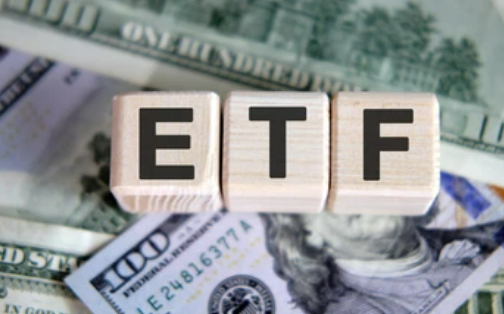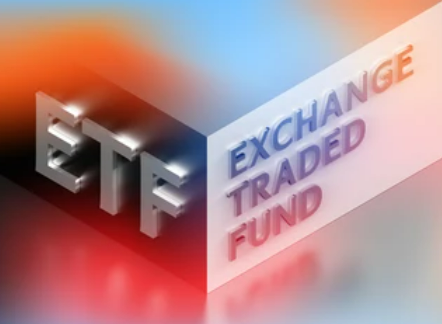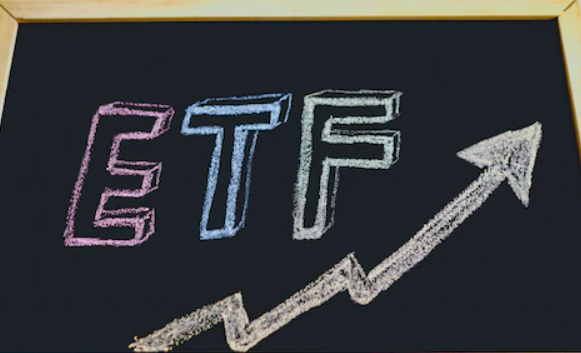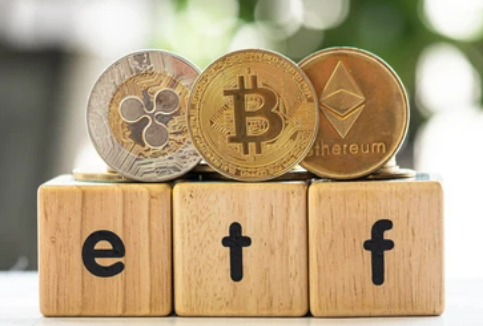10 Best International ETFs to Buy in 2022

Are you planning to include a global best international ETF in your portfolio? Indeed, 2021 was one of the best years recorded for ETFs. During this period, inflows into exchange-traded funds topped $1.22 Trillion.
However, 2022 is shaping to be a very different year owing to geopolitical difficulties in Ukraine, inflation, and the possibility of a recession.
As the stock markets plummeted, investors were confronted with volatility not seen since the financial crisis.
This article discusses the top International ETFs investors can consider in June 2022 to provide easy and dependable diversity to their portfolios.
What are exchange-traded funds (ETFs)?
Today, individuals seeking to invest their funds have a bewildering choice of possibilities. Investors can purchase individual stocks, options, futures, and even CFDs. However, an index or international ETF is the most excellent method to diversify a portfolio.
ETFs are generally passively managed funds that hold a collection or basket of equities. Actively managed ETFs are uncommon and cost more. You can purchase ETFs via your advisor or through your brokerage account.

Commonly, index ETFs are referred to as "Low-Cost Index Funds." Vanguard, Fidelity, and Schwab provide the most popular index funds in the United States. Typically, these Index ETFs track an index such as the S&P 500, Dow Jones Industrial Average, or Nasdaq.
In addition, index funds typically hold shares of each firm included in the index. Instead of purchasing 500 individual S&P 500 firms, investors might buy an ETF such as VOO.
List of 10 best international ETFs to buy in 2022
1. Vanguard FTSE Europe ETF (VGK)
Europe is a continent with a large number of successful businesses in a variety of industries. There, investors will discover, among others, technology, finance, defense, and consumer goods firms.
Consider the Vanguard FTSE Europe ETF if you're seeking the most efficient method to obtain exposure to these European firms. Indeed, this passively managed ETF tries to replicate the performance of the FTSE Developed Europe All Cap Index.
VGK's investment in 1,363 equities in key European markets, such as Germany, France, Austria, Netherlands, Italy, United Kingdom, Switzerland, and Ireland, is advantageous.
Nestle SA, Roche Holding AG, ASML Holding AG, and AstraZeneca plc are among VGK's top holdings as of 04/30/2022. VGK's total assets exceed $23.4 billion.
As of 4/30/2022, VGK's 1-year total return is -10.6% and 4.38 percent annually for the prior five years. In addition, its expense ratio of 0.08 percent is the lowest in its category.
2. SPDR Portfolio Europe ETF (SPEU)
SPEU is another European ETF that investors wishing to diversify their portfolios might examine. SPEU gives investors who choose to concentrate on European stocks regional exposure.
SPEU invests in 1 777 Western European firms in Germany, Switzerland, Sweden, the Netherlands, France, the United Kingdom, and other nations.
The fund's most significant holdings include Nestle SA, Roche Holding Ltd., ASML Holding NV, and Novartis AG. The fund manages a total of 207 million dollars. Moreover, thrifty investors would like the cheap 0.09 percent management charge.
Since its launch in 2002, SPEU ETF has provided investors with returns aligned with the benchmark. As of 04/30/2022, its one-year return is -7.89%, while its five-year return is 5.39% per year. Additionally, this international ETF has a reasonable dividend yield of 3.07 percent.
3. Global X FTSE Nordic Region ETF (GXF)
Europe's Nordic nations are Sweden, Finland, Denmark, Iceland, and Norway. These locations have become technological and innovative hotbeds.
This international ETF exposes investors to 68 businesses, including Novo Nordisk, Ericsson, Volvo, and DSV Panasonic.

GSF outperforms the competition as of 03/31/2022 with a 1-year gain of 12.88 percent and a 5-year increase of 9.83 percent. In addition, GFX has net assets of about $118 Million, an expense ratio of 0.5%, and a dividend yield of 0.3%.
4. Vanguard FTSE Pacific ETF (VPL)
VPL tries to mimic the performance of the FTSE Developed Asia Pacific All Cap Index. Those who purchase this passively managed international ETF have exposure to a portfolio of 2,496 equities in Japan, Hong Kong, Singapore, Australia, and New Zealand.
The three most extensive holdings as of 04/30/2022 were Samsung Electronics Co., Ltd., Toyota Motor Corp., and BHP Group Ltd. In addition, the general fund has an astounding $7.9 billion in assets and an expense ratio of 0.08 percent.
The returns, however, are comparable to the market as a whole. The 1-year return is -13.71 percent, while the 5-year return is 4.14 percent each year.
5. iShares MSCI Pacific excluding Japan ETF (EPP)
Investors seeking a selected selection of Asia Pacific companies need to go no farther than the iShares MSCI Pacific ex-Japan exchange-traded fund (ETF).
EPP exposes investors to 121 Australian, New Zealand, Hong Kong, and Singapore firms. Notably, this worldwide ETF excludes Japanese equities.
The assets under the control of EPP exceed $2.4 billion, with AIA Group LTD., Commonwealth Bank of Australia, BHP Group Ltd., and CSL Ltd. being its most significant holdings. Additionally, the expense ratio is 0.47 percent.
As of 04/30/2022, EPP has a remarkable 1-year total return of 2.43 percent and a 5-year total return of 5.5 percent annually. While these returns may not appear outstanding, remember that the S&P 500 index has a YTD return of -14.34 percent as of 06/04/2022.
6. Schwab Emerging Markets Equity Exchange-Traded Fund (SCHE)
SCHE may be the optimal option for investors seeking exposure to overseas ETFs. Its features and high returns make it appealing to the majority of investors.
Emerging markets are frequently turbulent and hazardous, making them profitable investment opportunities. This passively managed ETF manages roughly $8.7 billion in assets. SCHE invests in nations with rising markets, including China, Taiwan, India, and Brazil.
In addition, this Schwab ETF contains 1,874 equities. Real estate, energy, healthcare, and utilities are a few components included in the ETF.
Taiwan Semiconductor Manufacturing, Tencent Holdings, Alibaba Group holding, and Reliance Industries are the top stock holdings.
The cost ratio of SCHE is 0.11 percent, and investors in this sort of fund get dividends every six months between June and December. In addition, as of 04/30/2022, this ETF has a 1-year return of -16.16 percent and a 5-year annual return of 4.23 percent.
The volatility of emerging economies makes this ETF suited for investors with reasonable risk tolerance. Lastly, this is an excellent fund that may give an investor with worldwide exposure and diversity to counter investments in the United States.
7. ETF shares MSCI China (MCHI)
With approximately $6.6 billion in assets, the iShares MSCI China ETF is perhaps the most valuable Chinese foreign ETF. It exposes 619 mid-and large-cap Chinese firms, including Tencent, Alibaba, Meituan, and China Construction Bank Corp.
China boasts some of the world's largest firms outside the United States. And investors are paying more attention to Chinese enterprises.
Even if the expenditure ratio is only 0.59 percent, the returns demonstrate a challenging scenario in China. MCHI has a 1-year growth rate of -34.64 percent and a 5-year annual growth rate of 2.54 percent as of 04/30/2022.
8. Vanguard Global Equity ETF (V.T.)
Investors that purchase V.T. receive access to international stocks. V.T. provides investors with significant growth prospects but also with risk.
The share price may fluctuate more than an S&P 500 Index ETF. Among its top investments are Alphabet Inc., Microsoft Corporation, and Apple Inc.
Investors seeking global diversity and long-term performance from a single fund might choose V.T. The expenditure ratio is relatively low at 0.08 percent.
As of 04/30/2022, the fund had 9530 stocks with a 1-year return of -7.26 percent and a five-year return of 9.07 percent annually. In addition, its net assets surpass $32.8 billion.
9. iShares Core MSCI Total International Stock Exchange-Traded Fund (IXUS)
If you seek broad diversity, the iShares Core MSCI Total Foreign Stock ETF is, in my opinion, the finest international ETF. But is it appropriate for you? Let's find out.
Investors searching for the optimal method to enter the overseas market might employ a strategy that blends developing and mature markets. The IXUS is capable of this. It invests in Taiwan Semiconductor Ltd., Tencent, Alibaba, and Samsung, among others.
The IXUS exposes 4,352 equities for a nominal 0.07 percent yearly cost. Because it has a low standard deviation, IXUS is a trustworthy option for cautious investors seeking foreign exposure.
IXUS has a 1-year return of -2.31 percent as of 04/30/2022. In addition, its 5-year annual return has performed admirably at 10.13 percent. In addition, its net assets surpass $29.5 billion.
10. iShares MSCI Canada ETF (EWC)
Even though Canada is not typically considered international, the iShares MSCI Canada ETF is the Best International ETF of the year. As of 03/31/2022, its 1-year total return is a staggering 20, 31%, which even Warren Buffett would admire.
The 5-year return on EWC is likewise remarkable at 10.83%. Indeed, EWC provides an excellent chance for investors to acquire exposure to the most significant Canadian corporations.
The iShares MSCI Canada ETF invests in large-cap Canadian firms, including Royal Bank of Canada, Shopify, Toronto Dominion Bank, and Bank of Nova Scotia. And the outcomes are remarkable.
The expense ratio is 0.50 percent, while the value of the assets is $4.69 billion.
How is a global ETF different from other ETFs?
The geographical origin of an international ETF's assets is the primary distinction between it and other ETFs.
Hence, standard ETFs may invest mainly in domestic securities. But international ETFs may invest in various foreign securities or securities specialized in a particular country or area.
Investing in a global fund can give various advantages, including regional and political portfolio diversification and access to high international growth rates.
However, before investing in these funds, investors should stay cautious and ensure they have a thorough understanding of the market. Inspect the geographic, political, and economic climate of the place where they invest.

Investing in ETFs that focus on a single country may be riskier than investing in ETFs that spread their investments across multiple markets.
A political, environmental, or economic event may significantly impact an investment fund if it is overly concentrated in a single region or country.
What are the pros and cons of international ETFs?
Pros
Portfolio diversification: International ETFs diversify your portfolio so that you are not overexposed to a single market.
High growth rates: Some may offer more effective growth rates than domestic ETFs or equities.
Reduced risk: Investors do not need to become global financial experts or purchase hundreds of assets. They can invest in a single fund that spreads their risk across several worldwide investments.
Trades on an exchange: Unlike mutual funds, ETFs are exchanged like a stock on a market exchange.
Lower transaction expenses: Investors may own many firms and divide their interests over various areas without having to acquire each investment separately. This will reduce their transaction fees.
Lower management costs: While comparable to mutual funds in certain aspects, ETFs offer far lower management fees than mutual funds. Hence, their portfolios are often passively rather than actively managed.
Access to overseas securities: Many assets in international ETFs would be challenging to acquire separately since they may not be listed on U.S. markets.
Cons
U.S. markets have excelled: While specific overseas markets have historically outpaced domestic markets, U.S. equities have beaten the international market for the most of the recent decade.
Volatility: Due to currency volatility, political instability, and limited market regulation, international equities may be more volatile.
Country-specific risk: Investors may be overexposed to a single geographic location by investing in country-specific ETFs.
Management costs: While ETF fees are less expensive than other fund investing alternatives, foreign ETFs are often more costly than domestic ETFs due to higher international transaction expenses.
Guide on different types of ETFs funds
There are several distinct varieties of international EFTs. A few of them are discussed as follows:
Emerging Market ETFs: They exclusively invest in nations with emerging economies, such as China or Brazil.
Regional ETFs: They invest in distinct regions such as Europe or Latin America
Developed Market ETF: They invest in nations with more developed economies, such as Japan or the United Kingdom.
Single Country ETFs: They invest exclusively in securities and other investments from a single nation.
BRIC ETFs: This type invests exclusively in BRIC countries Brazil, Russia, India, and China.
Global ETFs: They invest in a range of overseas markets. Nevertheless, global funds may differ from strictly international funds in that they may also invest in the United States.
Frontier market exchange-traded funds: They invest in markets with minimal ties to the global economy. These might be riskier investments but provide the potential for greater profits. Nigeria, Vietnam, and Bangladesh are examples of frontier markets.
List of sample international ETFs
Here are some instances of foreign ETFs arranged according to their total assets:
Developed Market ETF - Vanguard FTSE Developed Markets ETF (VEA): Largest international ETF in total assets, at $108 billion. You can invest in mature markets, including Western Europe, Japan, and Australia. More than 1,000 component securities are held.
Developed Market ETF - iShares MSCI EAFE ETF (IEFA): total assets of $102 billion Invests in small and big capitalization enterprises located outside North America.
Emerging Markets ETF - Vanguard FTSE Emerging Markets ETF (VWO): The most prominent ETF, with $79 billion in total assets. You can invest in developing markets with a particular emphasis on China, Brazil, and India.
iShares Emerging Markets ETF - Core MSCI Emerging Markets ETF (IEMG) is the second-largest ETF in total assets, with $75 billion. You can invest in markets such as South Korea following the MSCI index.
Frontier Markets ETF - iShares MSCI Frontier and Select EM ETF (F.M.): With $501 million in total assets, this is the largest frontier market ETF. It follows an index that offers exposure to frontier and emerging markets across all market capitalization levels.
International ETFs can be helpful for rapidly diversifying a portfolio geographically and transferring risk across firms, asset classes, and locations. They provide diversification without the high transaction costs or difficulties involved with purchasing overseas investments separately, and the ETF structure is typically less expensive than mutual funds.
FAQs (Frequently Asked Questions)
1. Are overseas ETFs an attractive investment?
International ETFs offer diversification by minimizing the risk associated with selecting specific equities.
2. Which ETF does Warren Buffett recommend?
Buffett frequently suggests low-cost S&P 500 index funds such as SPY or VOO.
3. Which investment firm is superior, Vanguard or Fidelity?
Vanguard and Fidelity will give comparable returns on comparable items. However, merchants may find their diverse offerings to be advantageous.
4. How should I select an ETF?
The best ETFs are liquid (i.e., actively traded), strongly correlate with their index, and have low expense ratios.
5. Are foreign ETPs dangerous?
International ETFs provide exposure to several nations. Consequently, if holdings in one country outperform those in another, the disparities might be significant.
6. Which foreign ETF is best?
With a one-year total return of 20.31 percent, iShares MSCI Canada ETF (EWC) was the top international ETF in 2021.
Final thoughts
Worldwide ETFs provide investors with international diversification without the headache of choosing individual stocks. ETFs are often less hazardous than individual stock ownership. They may underperform the "hottest stock of the day."